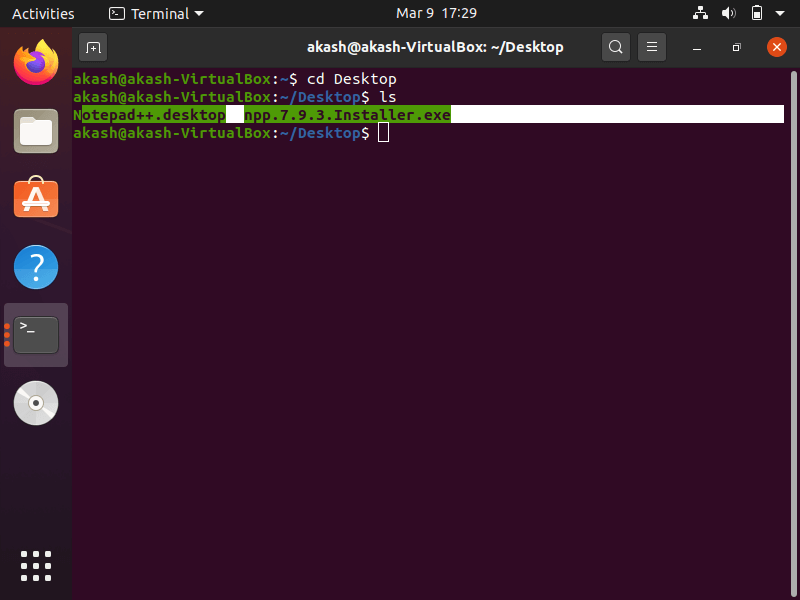

- #Wine on linux lite install#
- #Wine on linux lite update#
- #Wine on linux lite password#
- #Wine on linux lite windows#
Hence they came up with something called WINE which will help you run your favorite Windows apps on Linux. The Linux developers noticed this trend of users jumping back to their old OSes and not giving Linux more time to get used to and wanted to do something about it. Let’s face it, Linux does not come with support for productivity apps like MS Office, Adobe Suite of tools, and a bunch of other tools! They could not find any worthy alternatives for the important applications that the users have used in Windows.Coming to the Linux ecosystem for the first time and changing their entire workday around the Linux OS was already a lot for the beginner level user to handle and learning to work with new apps that they aren’t familiar with can make the entire process too much for them to handle.This is usually due to one of the following 2 reasons Even though there are equivalent apps in the Linux world, users tend to get back to Windows. You may also wish to run winecfg from the command line to access the GUI Wine configuration window.If you are a windows user, moving to Linux can be hard since you will not be able to use your favorite Windows apps any longer.
#Wine on linux lite install#
You will not find a “Wine” launcher in the Applications grid after you install Wine but you will be able to right-click on Windows installers/runtimes and open them with Wine. Once everything installed you can close the Terminal window.

Give everything listed chance to download, unpack, install, and configure itself. On a vanilla Ubuntu system installing Wine from the official repo will “just” work”. If you are unable to resolve things try the Linux section of the Wine HQ forum. The specific conflict(s) preventing Wine from installing will vary, so try to find out which package(s) is to blame, remove them, and try again. It is common to have issues trying to install Wine from the official repo on Ubuntu systems with PPAs or proposed updates enabled. If it proposes removing anything that would render your system inoperable hit n and back out.Īttempting to install Wine on Ubuntu and getting an error? You are not alone. You must PAY ATTENTION to the list of removals critical packages like ubuntu-desktop and xorg can sometimes be listed, so don’t idly whack y to proceed. In some cases you may also notice that some packages will be removed.
#Wine on linux lite password#
When you run this command (and enter a user password to authenticate the install) you will be presented with a long list of packages that apt will download, install and upgrade.
#Wine on linux lite update#
Once done, you’re ready to do the main task: installing Wine on Ubuntu: sudo apt update & sudo apt install -install-recommends winehq-stable If you use Ubuntu 22.10 ‘Kinetic Kudu’ (or a flavour, spin, derivative, etc) run this command instead: sudo wget -NP /etc/apt// ĭo NOT run both commands only run the command that matches your Ubuntu version. If you use Ubuntu 22.04 LTS ‘Jammy Jellyfish’ (or a Linux distro based on it, such as Linux Mint 21.x) run this command: sudo wget -NP /etc/apt// You’ll need to know which version you’re running so that you run the correct command listed below. Next, check your Ubuntu version from the Settings > About panel. Second, import the Wine repo keys to it: sudo wget -O /etc/apt/keyrings/winehq-archive.key Step 3: Add the Official Wine Repo To install newer versions of Wine from using Wine’s Ubuntu repo, you’ll need to ensure your system can securely communicate with it - which means importing security keys.įirst, create a new keyring: sudo mkdir -pm755 /etc/apt/keyrings To open a new Terminal window and run: sudo dpkg -add-architecture i386 Step 2: Add the Wine Repo Keys I know for a fact that you are using a 64-bit version of Ubuntu by default - no, I’m not psychic, it’s just Ubuntu discontinued 32-bit builds back in 2017.ĭespite that, the Ubuntu repos contain a lot of the relevant libraries and dependencies required to support the 32-bit architecture. First things first, you need to explicitly enabled 32-bit support.


 0 kommentar(er)
0 kommentar(er)
